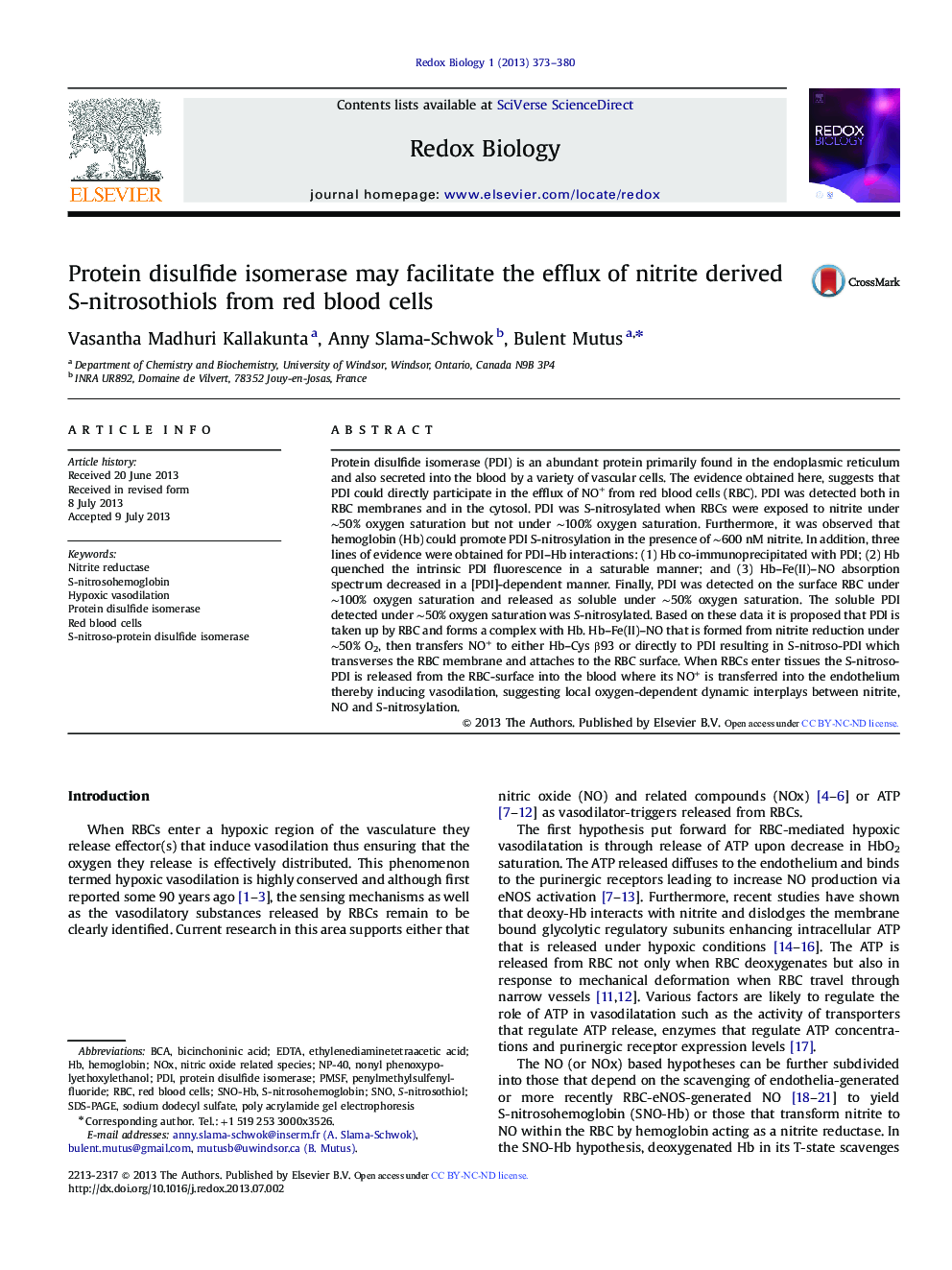| کد مقاله | کد نشریه | سال انتشار | مقاله انگلیسی | نسخه تمام متن |
|---|---|---|---|---|
| 1923257 | 1048882 | 2013 | 8 صفحه PDF | دانلود رایگان |

• Red blood cells (RBC) contain protein disulfide isomerase (PDI) that can associate with hemoglobin.
• Formation of S-nitroso-PDI is an oxygen- and Hb-dependent process.
• S-nitroso-PDI associates with RBC surface in an oxygen dependent manner that facilitates its release under hypoxia.
Protein disulfide isomerase (PDI) is an abundant protein primarily found in the endoplasmic reticulum and also secreted into the blood by a variety of vascular cells. The evidence obtained here, suggests that PDI could directly participate in the efflux of NO+ from red blood cells (RBC). PDI was detected both in RBC membranes and in the cytosol. PDI was S-nitrosylated when RBCs were exposed to nitrite under ∼50% oxygen saturation but not under ∼100% oxygen saturation. Furthermore, it was observed that hemoglobin (Hb) could promote PDI S-nitrosylation in the presence of ∼600 nM nitrite. In addition, three lines of evidence were obtained for PDI–Hb interactions: (1) Hb co-immunoprecipitated with PDI; (2) Hb quenched the intrinsic PDI fluorescence in a saturable manner; and (3) Hb–Fe(II)–NO absorption spectrum decreased in a [PDI]-dependent manner. Finally, PDI was detected on the surface RBC under ∼100% oxygen saturation and released as soluble under ∼50% oxygen saturation. The soluble PDI detected under ∼50% oxygen saturation was S-nitrosylated. Based on these data it is proposed that PDI is taken up by RBC and forms a complex with Hb. Hb–Fe(II)–NO that is formed from nitrite reduction under ∼50% O2, then transfers NO+ to either Hb–Cys β93 or directly to PDI resulting in S-nitroso-PDI which transverses the RBC membrane and attaches to the RBC surface. When RBCs enter tissues the S-nitroso-PDI is released from the RBC-surface into the blood where its NO+ is transferred into the endothelium thereby inducing vasodilation, suggesting local oxygen-dependent dynamic interplays between nitrite, NO and S-nitrosylation.
Figure optionsDownload as PowerPoint slide
Journal: Redox Biology - Volume 1, Issue 1, 2013, Pages 373–380